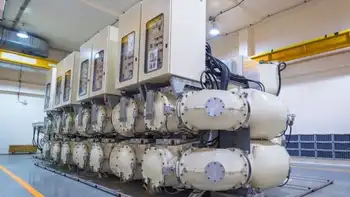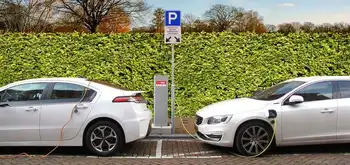Electric cars are suddenly sexy
I'm not talking about today's hybrids, which generate their electricity on-board, but about battery-powered electric vehicles that can be recharged by plugging them into the electricity grid.
While several automakers have produced electric vehicles in limited quantities over the past decade, primarily to satisfy California emissions regulations, none to date has proven to be a commercial success.
The introduction of General Motors' much-publicized Volt concept car was the apparent catalyst for the sudden renewal of interest in plug-in electric vehicles, although it is technically a series hybrid with plug-in capability.
(While it is driven solely by electricity, an on-board internal combustion engine drives a generator to maintain battery charge and extend the vehicle's driving range beyond that possible with a single plug-in battery charge.)
Toyota has countered GM's plans to introduce a production version of the Volt in 2010 by announcing that a plug-in variant of the hybrid Prius will be made available to selected fleet customers at about the same time. And many other automakers have started similar plug-in hybrid programs.
The electric vehicle surge does not stop with plug-in hybrids, however.
Tesla, an American startup company based in Silicon Valley, has attracted huge publicity for its $100,000-plus pure electric sports car, based on a Lotus chassis, which is now in limited production. With its exceptional performance capability, it has shattered the long-held image of electric vehicles as dull and plodding.
Tesla now has plans for lower-priced, more-mainstream electric vehicles as well. But more importantly, so do such established manufacturers as Audi, BMW, Daimler, Mitsubishi, Renault/Nissan, and Subaru, all of which plan to introduce production models in various parts of the world within the next two or three years.
Of those, the Renault/Nissan program is particularly interesting, in part because of its affiliation with Project Better Place, a company founded by Shai Agassi. Agassi, a former executive at software giant SAP, has ambitious plans that include redefining the whole vehicle ownership/energy-supply experience.
He envisions nationwide networks of both plug-in stations and battery exchange depots. Owners of electric vehicles would lease the batteries and contract for energy supply from the energy provider, choosing from a variety of usage packages – much as we now do for cellphone service.
Renault/Nissan signed a deal with Project Better Place last January to market electric vehicles in Israel. Renault will build the cars and Project Better Place will install 500,000 charging stations and 150 battery exchange depots throughout that country.
As is the case for most of the plug-in hybrids and electric vehicles now in the planning stage, the commercial development of lithium-ion batteries suitable for automotive use is key to the feasibility of the proposed Renault electric car. They will tentatively use lithium-ion batteries, being developed by a Nissan/NEC joint venture, that are expected to provide an operating range of about 200 km per charge.
The company plans to have several hundred cars on the road in Israel within a year.
Similar plans have been announced for Denmark and Portugal, and Nissan/Renault CEO Carlos Ghosn has said that the company intends to sell electric vehicles in the U.S. as well. Indeed, Renault/Nissan is committed to "becoming a global leader" in the production of affordable electric cars, Ghosn says.
In Israel, Agassi says he plans to use solar energy generated in the Negev Desert to power the vehicles. And therein lies another key to electric vehicles' ultimate success.
If they end up as a significant portion of the vehicle population, as their promoters suggest they could, recharging them will add a substantial load to the electricity supply infrastructure, which is already stretched to or beyond peak capacity in many parts of the world – including, at times, in Ontario.
Promoters suggest that vehicle recharging will be limited primarily to the overnight period when electrical demand is low, although that is an unlikely scenario, as Agassi has recognized in his plans. But even if that is the case, adding a dramatic load, such as that for recharging perhaps tens of thousands of electric vehicles, could alter the electrical base-load requirements.
In that case, increased generation capacity and transmission infrastructure could be required. That possibility has become a key point in discussions of the potential for electric vehicles in the United States, although it has received little attention here.
Furthermore, if electric vehicles are to be truly environmentally benign, the source of the electricity with which they are recharged must also be sustainable and clean.
Agassi has dealt with both the supply and environmental issues with his plans for additional generation capacity from solar farms in the Israeli desert.
But what of the prospects for significant increases in the electric vehicle population elsewhere in the world?
That is an area where governments at various levels have an opportunity to shape the future in a positive way.
What if, for example, they were to mandate that electric vehicle purchases or leases be tied to an energy supply contract for electricity from environmentally benign, renewable, non-nuclear sources? If the Japanese can tie vehicle ownership to access to parking, doing the same here for access to green electricity shouldn't be that different.
Such a policy would have multiple benefits. Not only would it enable the introduction of these vehicles on a mass scale while offsetting any increase in electricity demand with new, environmentally benign supply, it would also promote the development of that supply infrastructure.
Indicators suggest that, one way or another, electric vehicles will play a major role in our transportation future.
It is important that we start planning for that future now, and ensure that its needs can be met in an environmentally responsible manner.
Related News

UK must start construction of large-scale storage or fail to meet net zero targets.
LONDON - The U.K. government must kick-start the construction of large-scale hydrogen storage facilities if it is to meet its pledge that all electricity will come from low carbon sources by 2035 and reach legally binding net zero targets by 2050, according to a report by the Royal Society.
The report, "Large-scale electricity storage," published Sep. 8, examines a wide variety of ways to store surplus wind and solar generated electricity—including green hydrogen, advanced compressed air energy storage (ACAES), ammonia, and heat—which will be needed when Great Britain's supply is dominated by volatile wind and solar power.
It concludes that large scale…





